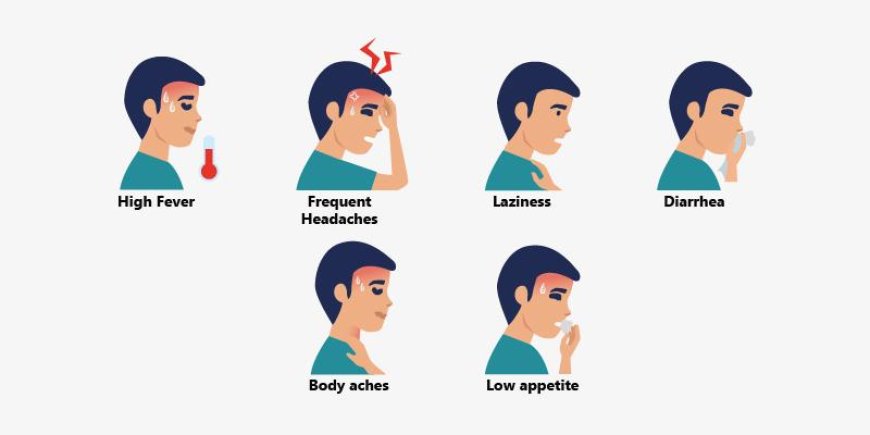Typhoid Fever

Introduction:
Typhoid fever is a bacterial infection that poses a significant health concern in India and many other parts of the world. It is essential to be aware of this disease, its signs and symptoms, causes, risk factors, and preventive measures to protect oneself and the community. This article aims to provide a simple and easily understandable explanation of typhoid fever and how it can be prevented.
What Is Typhoid Fever? :
Typhoid fever is a contagious infection caused by the bacterium Salmonella Typhi. It is primarily spread through contaminated food and water. In India, where sanitation and access to clean drinking water may be limited in some areas, typhoid fever remains a public health challenge.
Signs and Symptoms:
The signs and symptoms of typhoid fever can be severe and include:
- High Fever: The fever can be persistent and may gradually increase over several days.
- Abdominal Pain: Children may experience stomach pain and discomfort.
- Headache: Persistent headaches are common in typhoid fever.
- Weakness and Fatigue: Children may feel tired and weak.
- Loss of Appetite: They may lose interest in eating and have a reduced appetite.
- Constipation or Diarrhea: Typhoid fever can cause changes in bowel movements.
Causes and Risk Factors:
Typhoid fever is primarily caused by consuming food or water contaminated with the Salmonella Typhi bacterium. In India, poor sanitation, inadequate hygiene practices, and lack of access to clean water can increase the risk of contracting the infection.
Types of Typhoid Fever:
Typhoid fever is generally classified as either mild or severe, depending on the intensity of the symptoms. Severe cases can lead to serious complications and require hospitalization.
Diagnostic Tests and Treatments:
If a child shows symptoms of typhoid fever, a doctor may conduct diagnostic tests, such as blood or stool samples, to confirm the infection. Early diagnosis is crucial for appropriate treatment.
Treatment usually involves a course of antibiotics prescribed by a healthcare professional. It is essential for children to complete the entire course of antibiotics to ensure the complete eradication of the bacteria.
Prevention Techniques:
Preventing typhoid fever is essential to reduce its impact on public health. Some preventive measures include:
- Vaccination: In areas where typhoid fever is prevalent, vaccination is an effective way to prevent the disease. Vaccines are safe and can provide long-lasting protection.
- Clean Drinking Water: Drinking boiled or purified water can prevent contamination.
- Good Hygiene: Regular handwashing, especially before eating, can reduce the risk of infection.
- Safe Food Practices: Consuming well-cooked food and avoiding street food from unverified vendors can reduce the risk of contamination.
- Sanitation Improvement: Ensuring proper sanitation and waste disposal can prevent the spread of the bacteria.
Typhoid fever is a preventable disease, and with awareness and proper precautions, its impact can be minimized. In India, where the disease is prevalent, it is crucial for parents, caregivers, and communities to work together to promote good hygiene practices, access to clean drinking water, and vaccination to protect children and the entire population from this infectious illness.
What's Your Reaction?
 Like
0
Like
0
 Dislike
0
Dislike
0
 Love
0
Love
0
 Funny
0
Funny
0
 Angry
0
Angry
0
 Sad
0
Sad
0
 Wow
0
Wow
0








































































